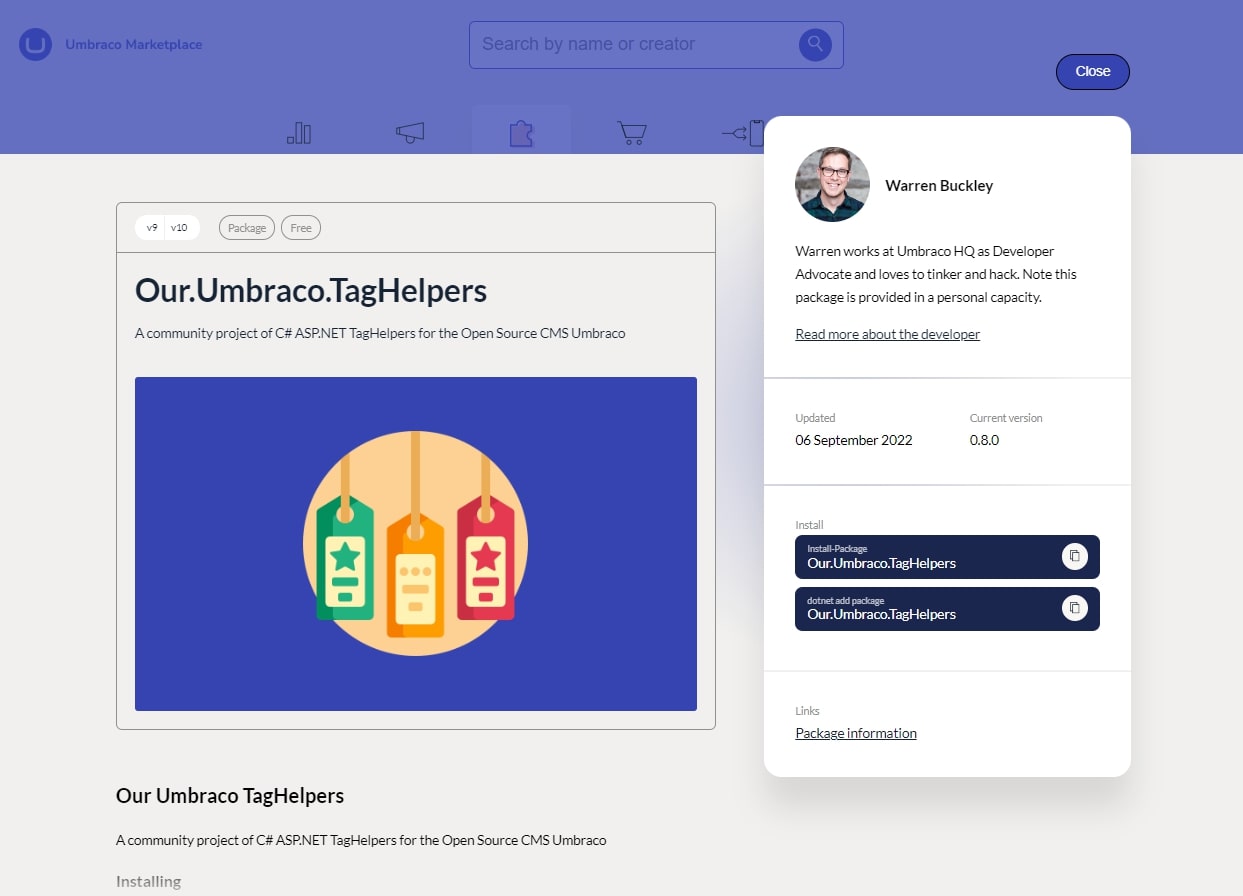Overriding NuGet information
The information we display on the website comes primarily from two sources: NuGet and the additional information provided by package owners. We've had a few cases where people had good reasons for wanting to display different information when the package is displayed on NuGet and the Umbraco marketplace.
We now allow you to provide a package title, description, readme content, and author name, specific for use on the Umbraco marketplace, so you can best describe your package to that audience.
As a straightforward example, mentioning the word Umbraco in the title or description on NuGet makes a lot of sense, but on the marketplace, everything is related to Umbraco. By populating the Title and/or Description field of the umbraco-marketplace.json file, we'll display that instead of the value retrieved from NuGet.
Similarly, by default, we will display the readme information gleaned from the listing on NuGet for a package. However, if you host a file by the name of umbraco-marketplace-readme.md in the same location as the umbraco-marketplace.json file, we will import and display that instead.
Automating contributors and packages by the same author
With the initial release we provided a means for package developers to provide an explicit listing of contributors and other packages built by the same author. This still exists, and if provided we'll continue to use that information to populate the respective areas of the listing.
However, for both of these, you can now omit or remove this information, as we have an automated means of importing this information.
- If you provide a SyncContributorsFromRepository flag in the umbraco-marketplace.json file, within the AuthorDetails element, and a GitHub source code repository is listed in the NuGet details, we'll pull in the contributors from GitHub. That way it'll keep up to date with contributors to your source code.
- We'll load packages by the same author based on the owners of the package on NuGet, displaying all packages that have an overlapping owner with the one being viewed.
Multiple packages for different Umbraco versions
Many packages are versioned along with Umbraco - so if a new version of a package is made available with changes necessary for say Umbraco 11, they'll be released on the same NuGet package ID with their own new major version.
We've found quite a few developers though preferring to create new NuGet package IDs for new versions - so there will be a "MyPackage.10" for Umbraco 10, and "MyPackage.11" for Umbraco 11, etc.
If that matches your setup, you can just list them separately. But it's perhaps not ideal - neither for yourselves having to maintain listings for different versions nor for those looking for packages and finding what seems to be duplicated.
Instead, you can just list your latest package, and use the VersionSpecificPackageIds element of the umbraco-marketplace.json file to indicate which other packages should be used for older Umbraco versions.
We do this for example for Umbraco Forms - see example here - where we indicate that for Umbraco 8, the package Id to use is "UmbracoForms" rather than "Umbraco Forms". This will extend the version range displayed on the website. And if someone is searching for packages that support Umbraco 8, they'll see install instructions that indicate which package Id and version to use:





